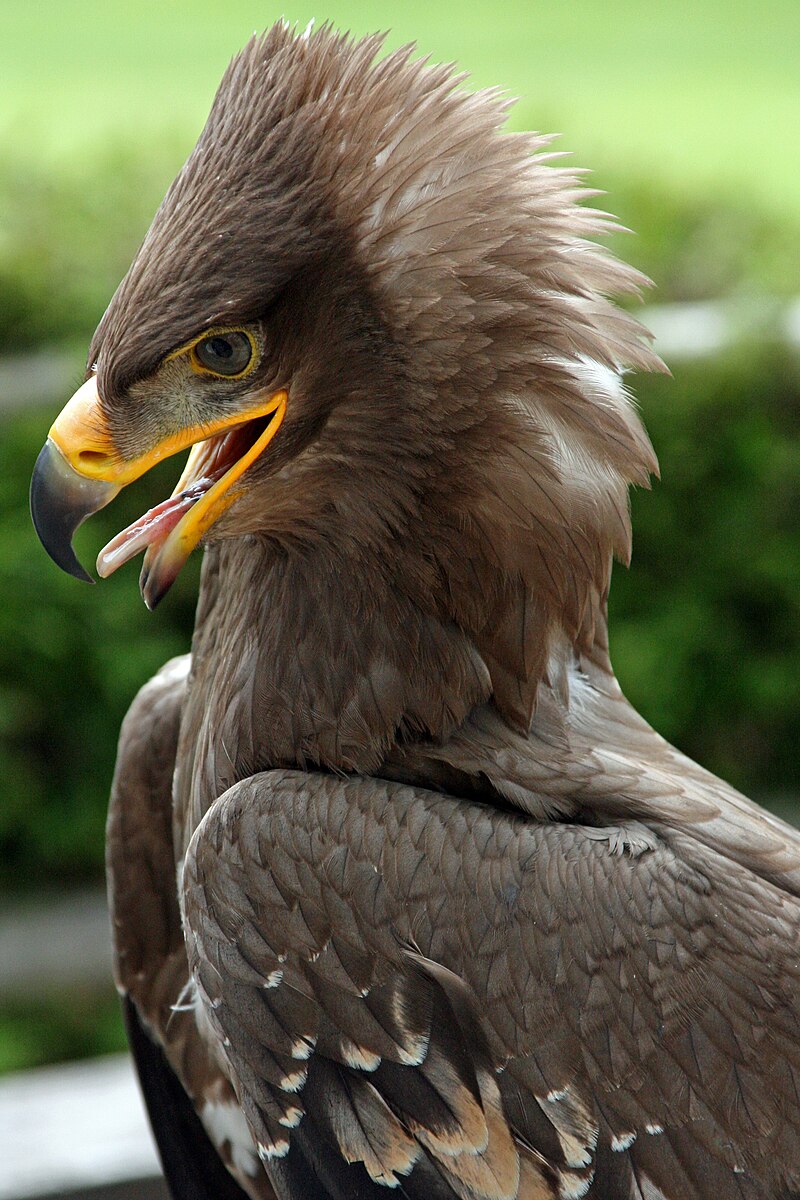Steppe eagles are known for their unique and diverse communication methods, which play a crucial role in their survival and social interactions. From vocal calls to flight patterns and behavioral cues, these majestic birds have developed a range of strategies to convey information and coordinate their activities.
Vocal Communication
Steppe eagles are relatively quiet birds, but they do possess a variety of vocalizations that they use to communicate. Their main call is a deep, continuous bark that resembles the call of a tawny eagle. This call is often used during breeding and when searching for a mate.
In addition to the deep bark, steppe eagles have also been observed making the following vocal sounds:
- High-pitched screams
- Melodious whistles
- Croaks
- Shrieks
These vocalizations serve different purposes, such as warning other eagles of potential threats, signaling their presence, or attracting mates.
Flight Communication
 Image source: Steppe Eagle by Fimb
Image source: Steppe Eagle by Fimb
Steppe eagles are known for their unique flight patterns, which are believed to play a role in their communication. Their flight is characterized by slow, deep, and stiff-looking wing beats, with wings fully extended on the upstrokes. This flight pattern is thought to provide stability during unsteady maneuvers and maintain positive loading on the wings.
When soaring, steppe eagles hold their wings flattish or slightly flexed, sometimes with the hands lowered. These distinct flight patterns are believed to convey information to other eagles, such as their hunting or territorial status, as well as their overall condition and energy levels.
Behavioral Communication
Steppe eagles also communicate through their behavior, which can provide valuable information to other members of their species. They are sometimes solitary but are frequently seen in the company of conspecifics throughout the year. During migration and non-breeding times, they often flock together and aggregate in large numbers at fruitful feeding sites.
Steppe eagles have also been observed briefly cooperating with one another, especially when it comes to kleptoparasitizing other birds of prey. This cooperative behavior is believed to be a form of communication, as it allows the eagles to coordinate their actions and maximize their hunting success.
Visual Communication
Steppe eagles have excellent eyesight, which is essential for successful hunting and survival in the wild. This sharp vision allows them to spot potential prey from great distances, and it is also believed to play a role in their communication.
Steppe eagles may use visual cues, such as eye contact, body posture, and feather movements, to convey information to other members of their species. These visual signals can be used to establish dominance, signal aggression, or indicate their readiness to mate.
Conclusion
Steppe eagles are highly adaptable and skilled communicators, using a variety of methods to convey information and coordinate their activities. From their distinctive vocal calls and flight patterns to their behavioral cues and visual signals, these majestic birds have developed a rich and complex communication system that is essential for their survival and social interactions.
References:
- https://www.inaturalist.org/taxa/5083-Aquila-nipalensis
- https://peregrinefund.org/explore-raptors-species/eagles/steppe-eagle
- https://facts.net/nature/animals/20-steppe-eagle-facts/
- https://operationmigration.org/steppe-eagle-the-ultimate-guide/
- https://en.wikipedia.org/wiki/Steppe_eagle
- https://www.hbw.com/species/steppe-eagle-Aquila-nipalensis
- https://www.iucnredlist.org/species/22698265/148228164
- https://www.allaboutbirds.org/guide/Steppe_Eagle/id

